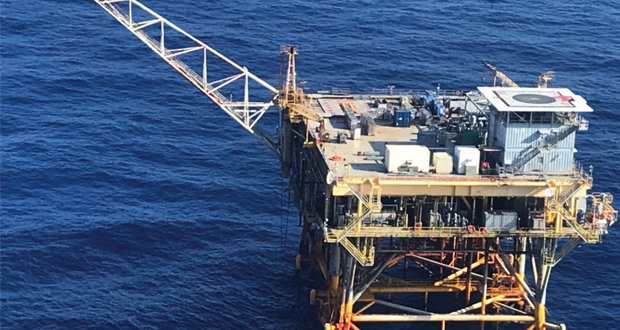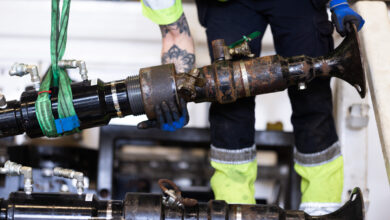BSEE releases investigation report on fatality at Fieldwood platform in US Gulf of Mexico


The US Bureau of Safety and Environmental Enforcement (BSEE) released a panel investigation report on a 2020 incident that occurred on Ewing Bank, Block 826, Platform A. The platform, located approximately 60 miles south of the Louisiana coast in the US Gulf of Mexico, is operated by Fieldwood Energy. The incident resulted in a fatality.
The panel, which included BSEE subject matter experts, engineers, inspectors and specialized investigators, conducted its investigation of the incident to determine the cause and contributing factors that led to the fatality of a fluid crane and construction (FCC) crew member contracted by Fieldwood.
The incident occurred on 16 May 2020 while the FCC crew was in the process of replacing grating on the casing deck of the platform. Fieldwood contracted FCC to replace the grating on the casing deck after April 2018 and November 2019 Level I Surveys of the platform revealed a grade of “C–Poor” on approximately 30% and 60% of the grating on the casing deck, respectively. Fieldwood conducted its own audit of the platform in December 2019.
To address the findings, the casing deck was placed out of service until all of the grating could be replaced. Hard barricades placed at both stairways were used to access the deck. On the day of the incident, personnel on the platform gathered for the morning safety meeting at approximately 6:00 a.m. to discuss the day’s jobs. The construction crew planned to complete the previous day’s job of repairing grating on the casing deck, which had been delayed due to weather issues.
The job safety analysis (JSA) that the construction crew discussed during this meeting copied the job steps used from the previous day’s grating repair JSA. At approximately 6:30 a.m., the safety meeting concluded, and the construction crew proceeded to the casing deck to begin the process of changing the grating. The construction crew for this task consisted of a fitter, a welder, two riggers (one of whom was the victim), and a scaffolding builder who acted as a fire watch.
According to the BSEE report, when the fitter, the welder and two riggers entered the barricaded casing deck, they began staging the tools needed to prepare the old grating for removal: a torch, chipping gun, hammers, metal saw, etc. Crew members said during interviews that they had previously staged their fall protection equipment but did not put it on, even though they discussed utilizing fall arrest systems during the morning safety meeting.
The fitter directed the welder to begin “ripping” the old grating (the process of cutting the grating along its length) while he set up hoses for the torch. The person–in–charge and construction manager then summoned the rigger and victim to the fuel gas
scrubber on the production deck to tighten a hammer union. During their absence, the welder continued ripping the area where the victim was previously working.
At approximately 7:30 a.m., after the rigger and victim returned to the casing deck, again without donning their fall protection, the section of grating on which the victim stood parted. The fire watch witnessed the victim partially fall through the grating, and attempted to alert personnel on the casing deck, to no avail. The fire watch then left his post to alert all personnel on the platform about the incident via the GAI–Tronics intercom. By the time the fire watch made the announcement, the victim had fallen approximately 50 ft to the +10 deck.
Probable causes and recommendations
The BSEE report noted four probable causes of the incident:
- Fieldwood failed to maintain all walking surfaces on the facility in a safe condition;
- Fieldwood failed to ensure that FCC’s safe work practices (SWPs) met or exceeded their own SWPs;
- Supervisors failed to fulfill their intended responsibilities within the relevant, established SWPs; and
- Personnel performing the job failed to adhere to the requirements of the JSA.
The panel also outlined key recommendations identified as a result of the investigative findings detailed within the report:
- All facility walking and working surfaces should be regularly inspected and maintained to ensure they are in a safe condition.
- Operators must perform an internal review of their contractors’ safety and environmental management system programs to suitably and adequately identify gaps in a bridging agreement. Responsibilities must be clearly assigned. These bridging agreements should be periodically reviewed to ensure continued effectiveness.
- Supervisors should be trained, skilled and knowledgeable in their assigned duties and responsibilities. They should take an active role in task planning, hazard analysis and supervision of work.
- JSA training should be refreshed on a periodic basis.
- A clear delegation of authority should be communicated to all personnel.
- Construction crews should be trained on the dangers of compromised grating and the hazards associated with ripped grating.
- Clear signage conveying fall protection requirements should be posted on or near barricades, where necessary.
- Consider entry logs, maintained by a fire (or hole) watch or job site supervisor, that document when specific personnel enter and/or exit barricaded areas.
- Fire (and hole) watches should have personal communication radios for contact with their assigned crew. Also, consider in–ear hearing protection, with radio hookup capability, so that construction personnel in loud environments can be alerted to dynamic situations.
- Personnel should exercise stop work authority immediately upon notice that proper personal protective equipment is not in use and the job is unsafe.




